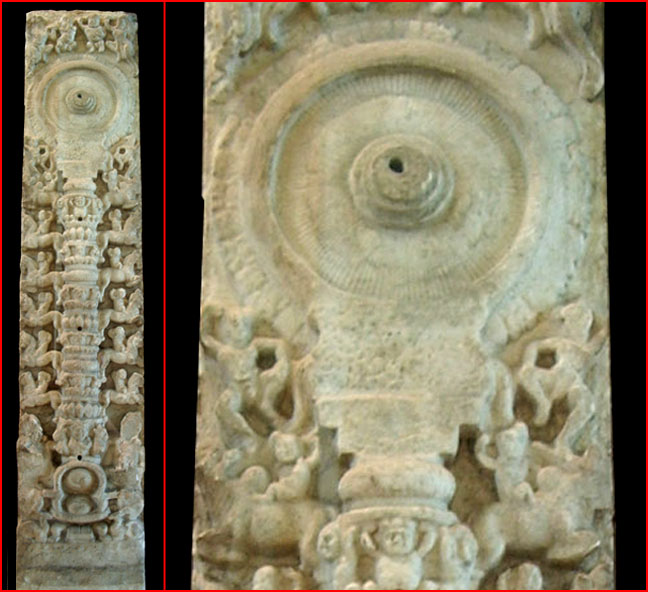|
|
||
 Credit and Copyright: Rens van der Sluijs |
||
|
pic of the day Links:
Society for
|
Dec
14, 2004 Some passages of the old Egyptian Pyramid Texts make it clear that the sun god Ra was located in the circumpolar region of the sky. This is odd considering that the sun never ventures close to the pole. Even stranger is the tendency to place this sun god on the summit of an elongated object. At Hermopolis, the sun god was represented as standing on the primordial mound, which was the Egyptian version of the cosmic mountain as the first object to be created. At Heliopolis, the sun god was held to rise daily from the fire that burned at dawn on the top of the holy sky-filling Ashet- or Persea-tree. In this capacity, the sun god was better known as the Benu or Bennu, the solar bird rendered Phoenix in Greek. And an informative, yet cryptic paean to Ra composed in Thebes attributes the cycle of day and night to the sun god's entry and exit of his "circle". The reference to the deity's outstretched wings shows that this circle must be thought of as the ring one sees in the image of the winged disc. Moreover, this winged disc is located on top of a pillar: "Thou spreadest out thy
wings
There is no escaping the fact that the composer of this hymn thought of Ra as the winged red disc placed motionless "on his high place", the obelisk. This means that the subject of veneration here and in those passages in the Pyramid Texts was another sun than the ordinary sun which crosses the sky. It appears that the earliest form of the sun god worshipped by the Egyptians was a radiant, stationary sphere placed atop a glowing column. Only in subsequent times was this sun god assimilated to our revolving sun. This analysis is supported by a multitude of similar accounts found in early sources from around the world. In many cases the abode of the motionless sun and his pedestal is identified as the cosmic centre and the axis mundi. For example, one of the sacred Indian writings asserts that the sun 'never leaves Meru' and an epigraphical text describes Meru as the support of the sun. Meru was the Vedic equivalent of the cosmic mountain, which was explicitly located at the polar centre of the earth. The upshot is that the archetype of the stationary sun is best explained as a memory of a luminous object that appeared for some time on the axis mundi. But this requires that the ancients experienced a different, more turbulent sky than the one presently seen. The model advocated here involves the hypothesis that the cosmic axis was once visible as a stupendous, heaven-reaching column in the "centre" of the world. It was formed of glowing plasma that was produced by high-energy disturbances in the geomagnetic field and an increased influx of charged particles from the solar wind. Plasma physicist Anthony Peratt has produced a detailed analysis of the evolutionary sequence of this plasma column. His research indicates that the topmost toroids of the column at some point merge and produce the image of a cusp or cup enclosing a central sphere. This central sphere bears all the hallmarks of the stationary sun born of the "lotus flower" that the myths hint at. Contributed by Rens van der Sluijs
|
|
|
Copyright 2004: thunderbolts.info |
||
